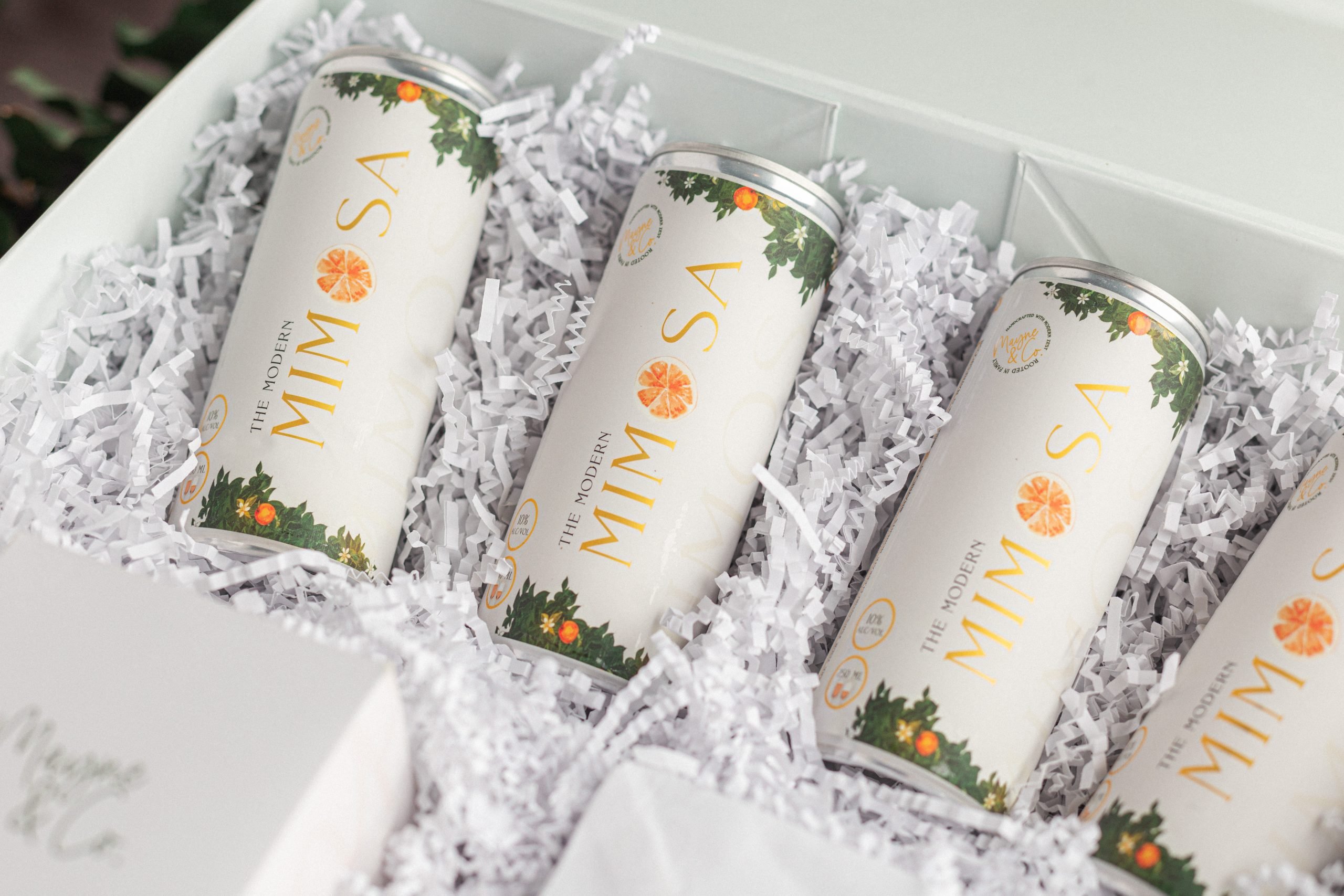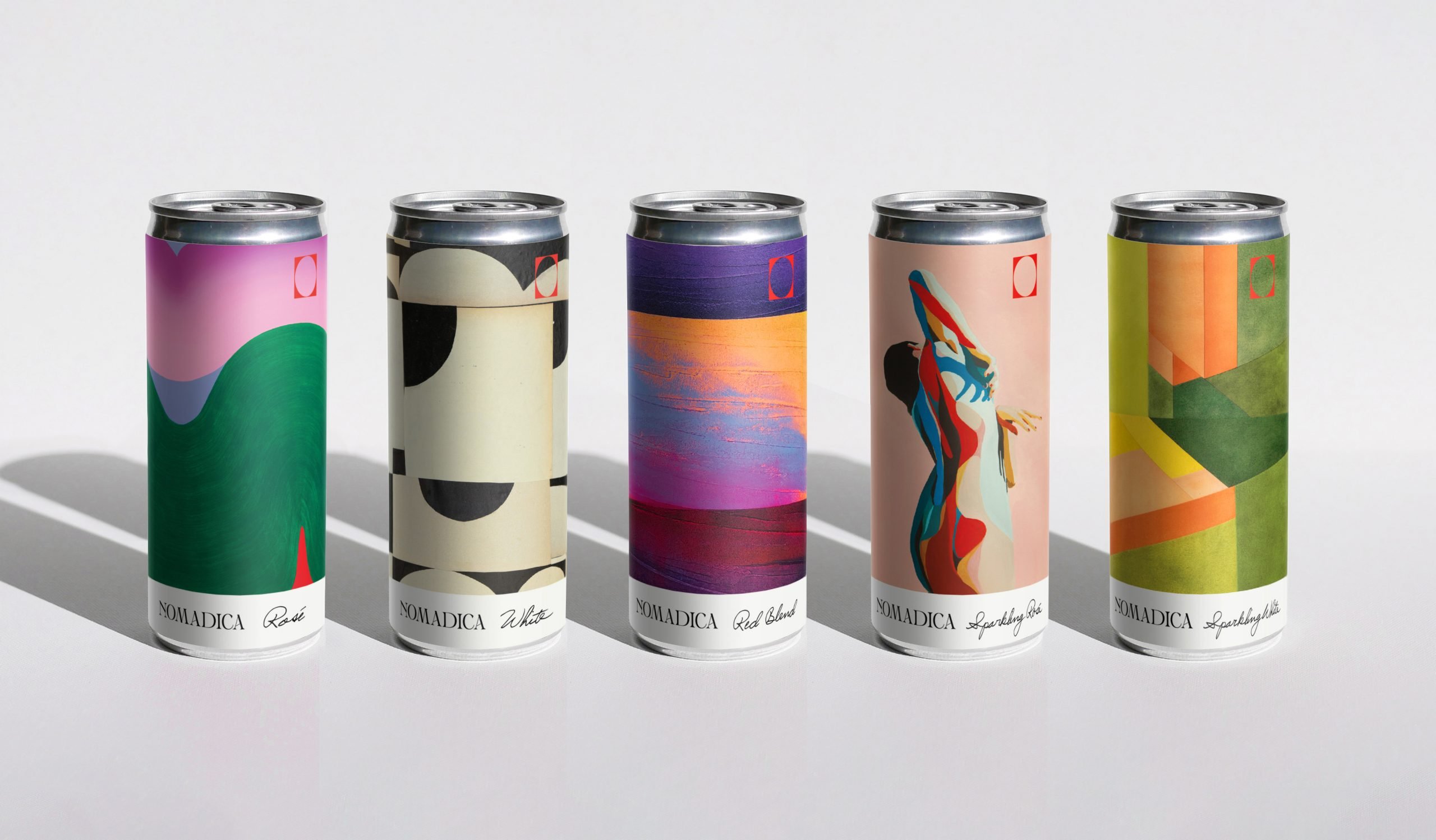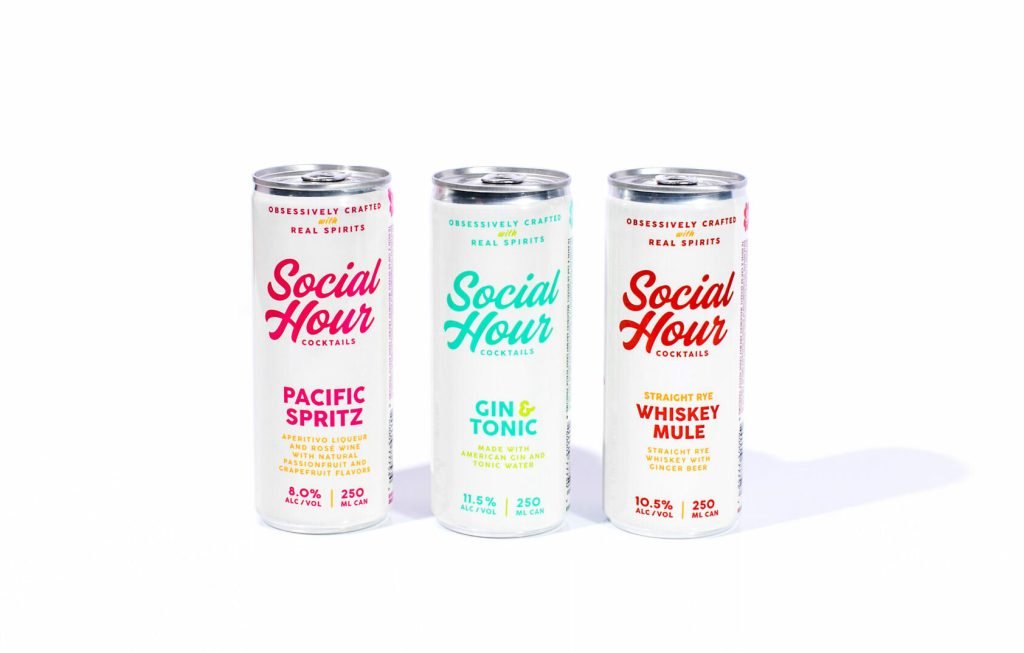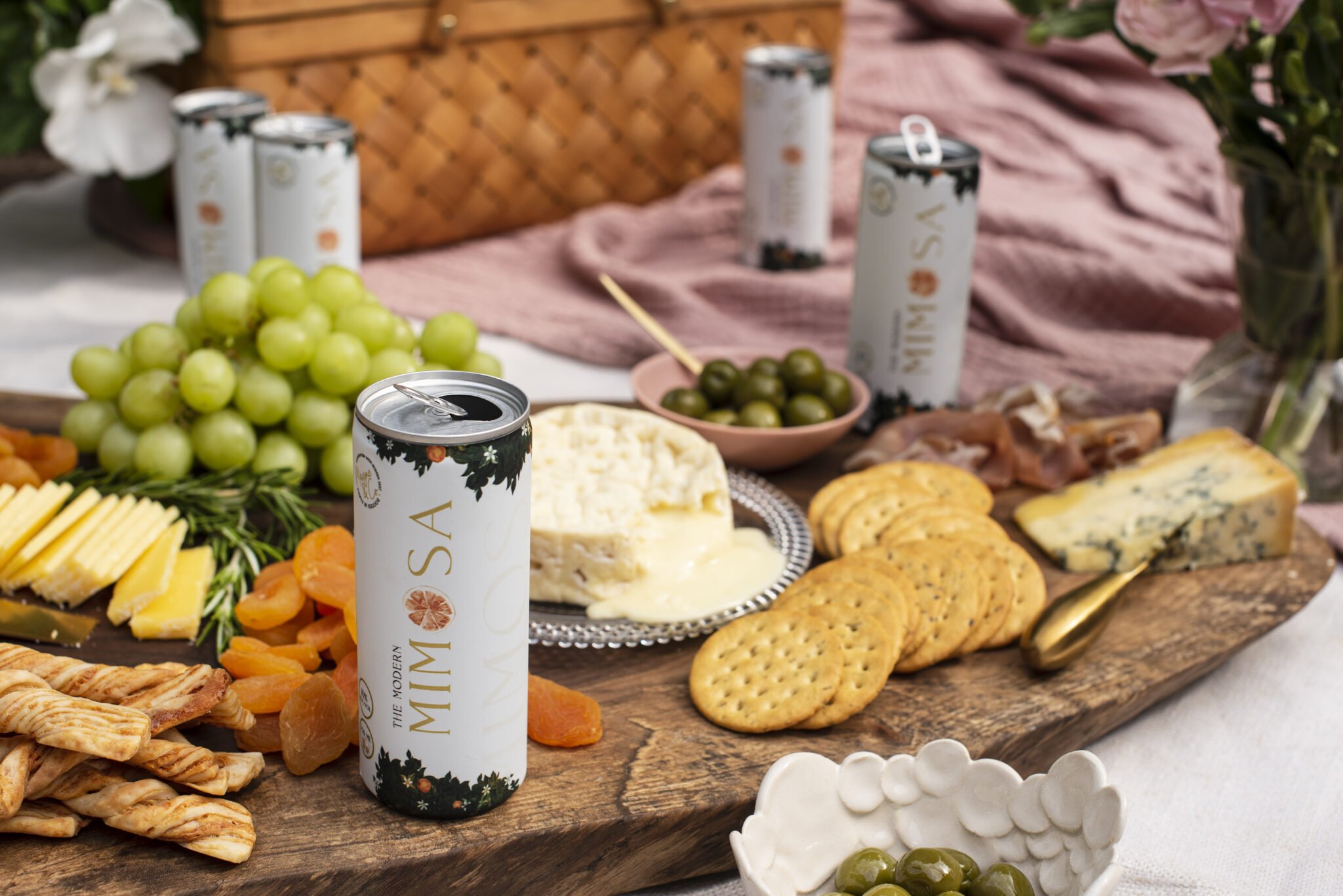 It started in 2013 when SpikedSeltzer came to market. Though cofounders Dave Holmes and Nick Shields admit retailers were confused when the brand introduced its hard seltzer, it would soon become a massive trend with hard seltzer brands White Claw and Truly coming to the market in 2016. Now branded as BON V!V, SpikedSeltzer is largely credited for ushering us into the era of hard seltzers, setting the stage for this even-newer era of craft canned cocktails.
It started in 2013 when SpikedSeltzer came to market. Though cofounders Dave Holmes and Nick Shields admit retailers were confused when the brand introduced its hard seltzer, it would soon become a massive trend with hard seltzer brands White Claw and Truly coming to the market in 2016. Now branded as BON V!V, SpikedSeltzer is largely credited for ushering us into the era of hard seltzers, setting the stage for this even-newer era of craft canned cocktails.
Of course, the pandemic was also something of a catalyst for the rise of canned cocktails. We all know that there was a major increase in alcohol sales during COVID; Nielsen reported a 54 percent increase in sales toward the end of March 2020 compared to that same time the previous year and a whopping 262 percent increase in online sales compared to the year prior. And with bars and clubs largely shuttered, there has never really been a better time to enjoy ready-to-drink cocktails in the comfort and safety of your own home.

Earlier this year, I began receiving more canned cocktails to sample in the mail than ever before. As Worth’s resident wine and spirits columnist, I typically get a ton of wine, more than enough whiskey and a fair amount of tequila and other spirits. But the last six months have been different, filling my mailbox with canned wines, gin and tonics and specialty cocktails. I understand the hype—when not entertaining guests due to the initial pandemic and now the rising Delta variant, why stock a bar cart with various spirits, mixers and garnishes when you can just crack open a premium, ready-made, bar-quality cocktail?
For me, it began with a canned mimosa called Modern Mimosa from the brand Mayne & Co (pictured right). I sat down with brother-and-sister cofounders, Allie and Scott Griswold, back in February. They noted that they placed importance on the quality of the ingredients they were using to create their drinks—a sentiment everyone I interviewed for this story echoed. Since they wanted the wine to really shine in their mimosa, Mayne & Co. decided to source their wine from a cooperative of 400 small farmers in Southern Italy who use sustainable farming methods.
and Scott Griswold, back in February. They noted that they placed importance on the quality of the ingredients they were using to create their drinks—a sentiment everyone I interviewed for this story echoed. Since they wanted the wine to really shine in their mimosa, Mayne & Co. decided to source their wine from a cooperative of 400 small farmers in Southern Italy who use sustainable farming methods.
“What we love about it is it’s a community for these farmers to keep the land in their family for generations to come, and they have years and years of history and tradition that is put into this really delicious wine that they don’t export a lot of,” Allie said. “Once we tried it, it was pretty clear why they wanted to keep it all there in Italy. It’s delicious, and it complimented the orange juice and the bright flavors of that really nicely.”

As far as cocktails go, mimosas are relatively simple—champagne and orange juice. Easy, right? Well, for Mayne & Co., they tested different wine-and-orange-juice formulations to concoct a wine-forward mimosa that harnessed the brightness and freshness of the orange juice. What they ended up with is a cocktail that tastes high-quality and is easy to have on hand.
“It’s been really exciting to see the rise of canned cocktails, especially wine spritzers, and we found a lot of them were very sweet,” Allie said. “We kind of went back to our preferences [of] having a mimosa that you would make at home with a really good wine and a fresh orange juice and wanted to recreate that in a can in a way that we felt wasn’t currently available.”
Sustainability was also an important factor for Allie and Scott. Scott told me that through utilizing the cooperative’s wine, they hope to put more sustainable wine in front of U.S. consumers. Allie also mentioned that cans are a more sustainable material than traditional glass wine bottles. Kristin Olszewski, a level-3 sommelier, as well as founder and CEO of premium canned wine company Nomadica, pointed this out too when I spoke with her, though she noted that not all wine is suitable for canning.
“I don’t think I ever really took a hard look at how unsustainable the wine industry was, and I do think cans are a really amazing way to just reduce our carbon footprint a little bit,” she said. “I’ll never argue that fine wine that’s meant to age should be in a can. I really believe young, fresh wines are perfect for a can.”
Olszewski says Nomadica is the only sommelier-curated canned wine company on the market currently. And while a distinction like that naturally sets Nomadica apart from the other canned cocktails and spirits available right now, Olszewski said that on a recent work trip to Tennessee, she found buyers seemed fatigued by the trend.

“I cannot tell you how many times I walked into a retail shop or a restaurant or a hotel, and the buyers were like, ‘another can? You’re kidding me,’” she said, laughing. “And then I was like, ‘no, just face it, hear me out.’ Once I get people to taste, they understand we are functioning in a different league, one of quality. But I think the White Claw effect is real.”
One aspect of hard seltzers that has made them so popular is that they cater to those looking for a spirited drink that is somewhat better for you, with hard seltzers having less sugar, carbs, calories and lower alcohol content than many other alcoholic beverages available. Vodka soda and tequila soda brand Canteen Spirits sought to go even further than hard seltzers in making a better-for-you drink by crafting canned cocktails that contain natural ingredients, no sugar and no sodium.
“Our mission was to try to create a product that was as guilt-free as you could make it without shirking on flavor, so we’re not going to abandon taste, but we’re not going to load it up with sugar either,” Brandon Cason, CEO and cofounder of Canteen Spirits, explained. “We are proud to have no sugar in any of our products. And we’re proud to use ingredients that allow us to achieve a zero carb nutritional facts panel.”
In competing with other canned cocktails and hard seltzers, the difficulty is getting buyers to believe your product is truly something special that covers an aspect of the market that perhaps hasn’t yet been accounted for. When she first began pitching and fundraising for Nomadica, Olszewski found her company was quick to be compared to White Claw. But Nomadica is a very different product. Unlike the hard seltzer, Nomadica houses a selection of premium wines in their stunning artwork-covered cans, but Nomadica also speaks to a different consumer base—one that is primarily wine drinkers looking to discover sommelier-grade wines anytime, anywhere they’d like.
Of course, once the pandemic hit, so did a rise in e-commerce, not least of all in the wine and spirits industry. “As somebody who comes from restaurants, and the world of food and beverage, I don’t think I ever expected e-commerce to be what is now a good chunk of business online, and we have a ton of returning customers. I think something that is exciting about it, for us as a business and also for our consumers, is we have the opportunity to speak to them directly,” Olszewski said.
As Allie of Mayne & Co. spoke to, part of the success of canned cocktails is how effortless it is for at-home consumers. But most consumers wouldn’t prefer to skimp on quality just to have ease, and in the market now, there’s no need. With industry veterans like Scott Griswold, Kristin Olszewski and canned cocktail company Social Hour’s Julie Reiner, consumers can have bar-quality drinks with none of the hassle.

Reiner, who owns bars across New York including Clover Club and Leyenda, notes that consumers’ routines have changed, allowing for canned and to-go cocktails to rise ever higher.
“When we were doing to-go cocktails out of Clover Club, we’d have people come and buy a large bottle of our Kula Negroni or our Manhattan that we sell,” Reiner said. “We’d send it home with them with instructions, and they could have Clover Club, high-quality cocktails at home. So, I think that the canned cocktail and RTD (ready-to-drink) market, it’s all connected, and people are enjoying having the same high-quality stuff at home as they would have while sitting at your bar.”
In 2020, the global canned cocktail market was valued at $714.8 million by Grand View Research, with projections to grow 12 percent annually from now until 2028. By 2028, Grand View Research anticipates the RTD cocktail market will have raked in $1775.1 million in revenue. It seems that what could have been a fad might actually be revolutionizing the way we enjoy wine and spirits.







